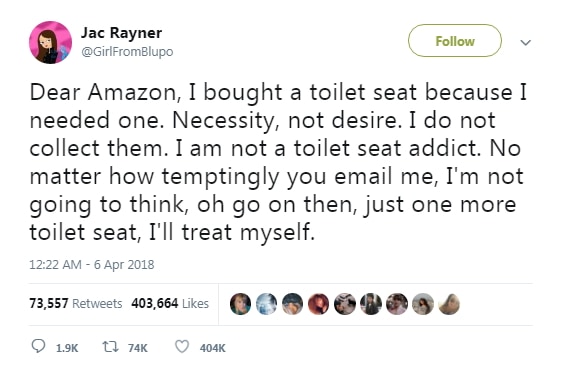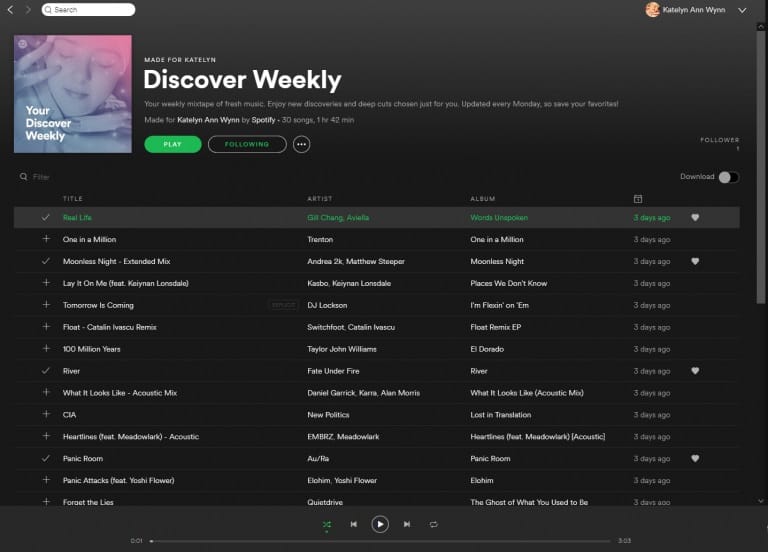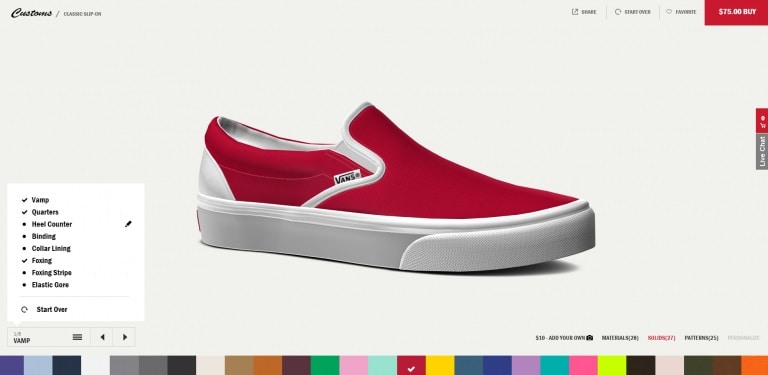POSTED : May 30, 2018
BY : Martin Mehalchin
Categories: Customer Engagement,Strategy & Design

More often than we see good examples of personalization, we see the bad. There are countless examples across social media of customers experiencing companies missing the point when it comes to personalization. Take this Amazon customer for example:

@GirlFromBlupo: Dear Amazon, I bought a toilet seat because I needed one. Necessity, not a desire. I do not collect them. I am not a toilet seat addict. No matter how temptingly you email me, I’m not going to think, oh go on then, just one more toilet seat, I’ll treat myself.
Obviously, this customer bought a toilet seat as a one-time purchase, out of need rather than desire. This is just one example of personalization gone wrong, which explains why so many companies have a difficult time developing and implementing a personalization strategy successfully. It’s the number one inquiry into Gartner and is a key theme at this year’s Loyalty Expo and The CRMC.
But personalization is not a lost cause! Many companies have gotten a firm grasp on the power of personalization and are using it to unlock revenue and add value for customers. The most successful ones understand that personalization is at its core a data problem. Spotify, the market leader in music streaming pays close attention to how their customers use their service, creating data-driven personalization.
By collecting data on the songs subscribers listen to, Spotify can plug this data into an algorithm and generate a personalized playlist of new music for the user every week. This feature, called Discover Weekly, drives deeper product usage by solving the challenge of finding new music in a highly personalized fashion.

Discover Weekly allows Spotify to personalize playlists for their listeners.
As customers listen to these playlists and indicate their preferences by skipping some songs and repeating others, the personalization flywheel kicks into full gear and Spotify can improve the playlists week over week. These engagement-based improvements lead customers to be deeply attached to the brand and create a significant churn barrier.
In retail, Vans creates personalization through their Vans Custom program. Customers are given the opportunity to create their own product, customizing style, design, color and material via an online portal on the Vans website. This drives fierce brand loyalty while putting the customer in charge of the personalization, thus avoiding many of the issues we see with traditional personalization approaches.
While there is risk in personalization, there is also much to be gained. Where are you on your road to personalization? Are you just starting out, or do you need to rethink your efforts?

Vans allows customers to create their own pair of custom Vans.
Related readings: Download the Guide to driving impact with personalization which dives into how you can make personalization work for your brand.